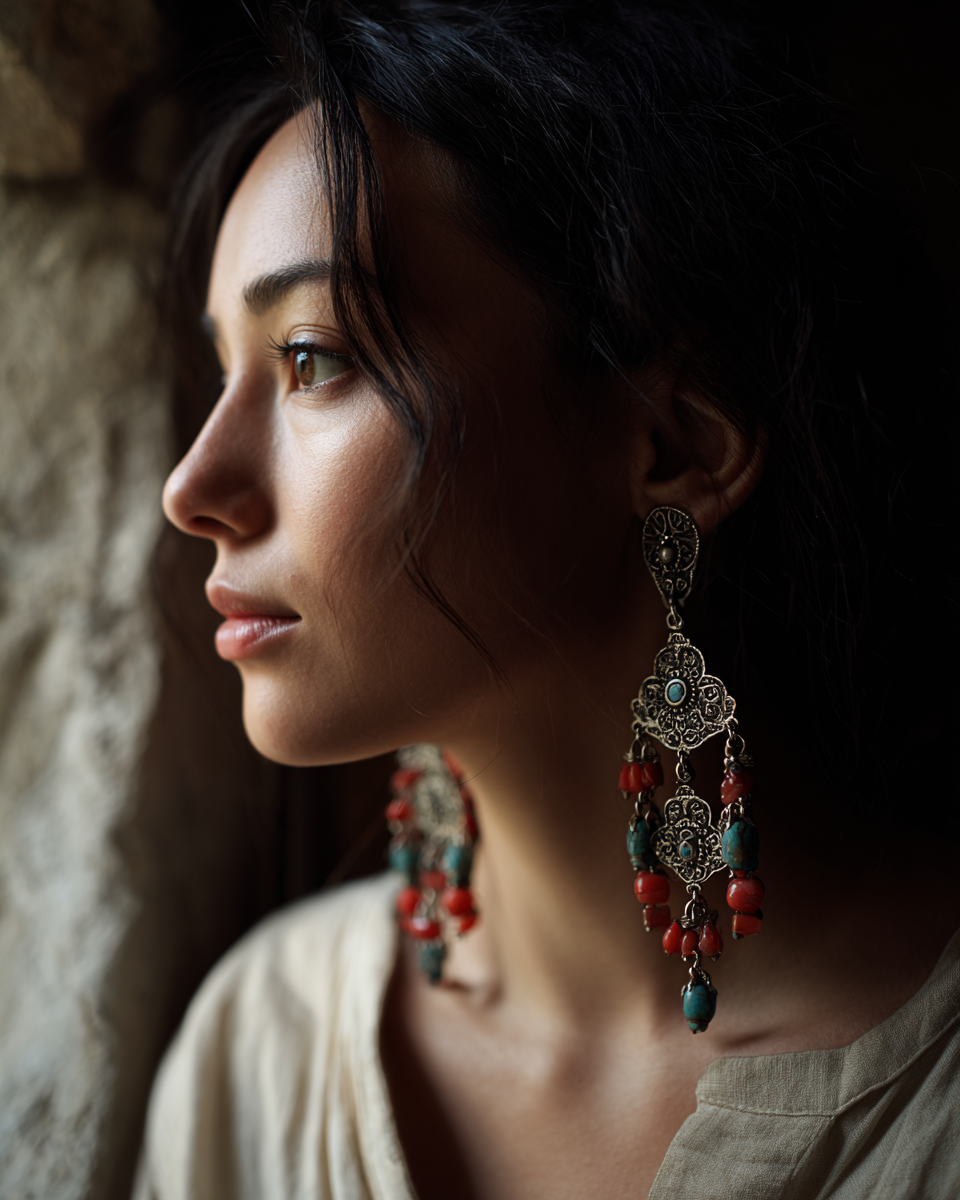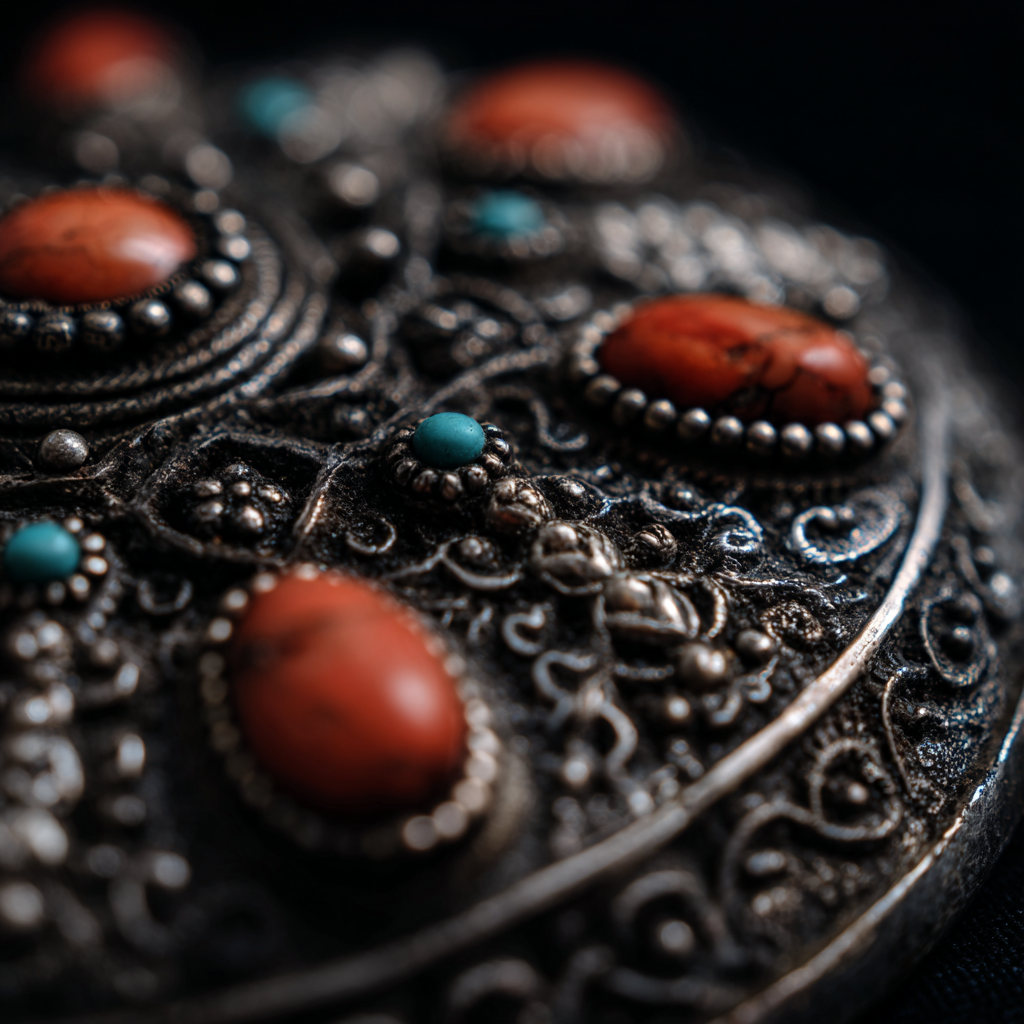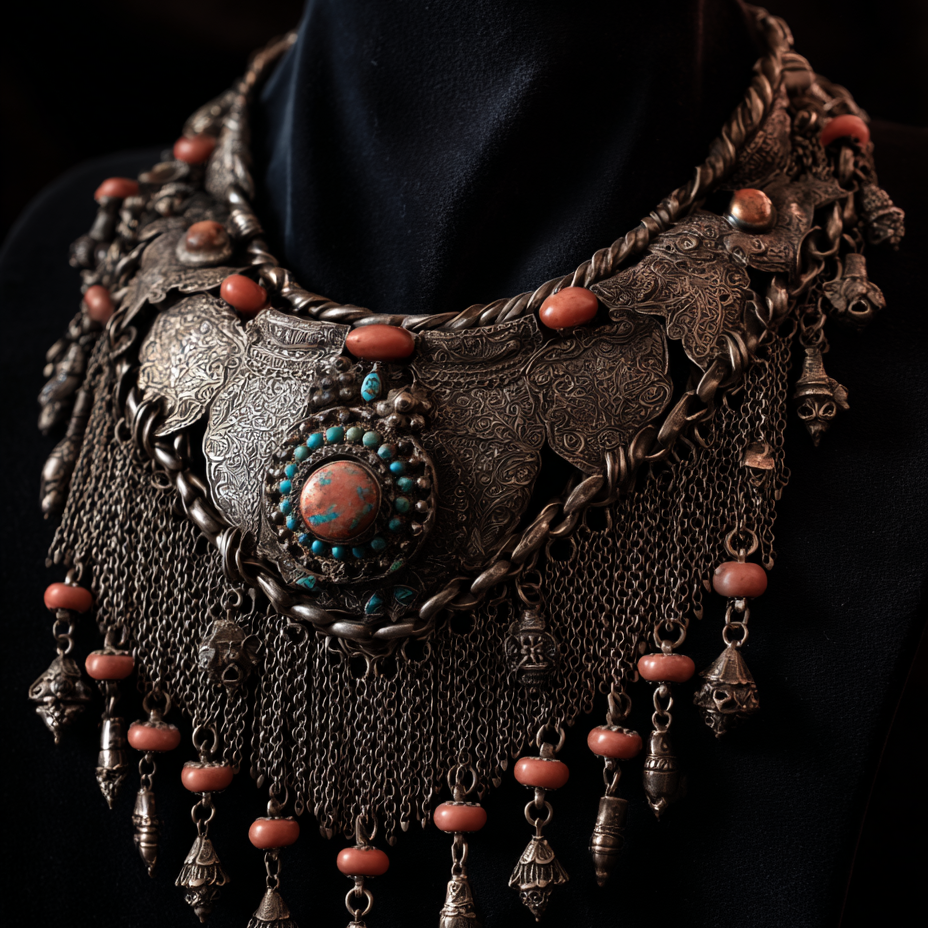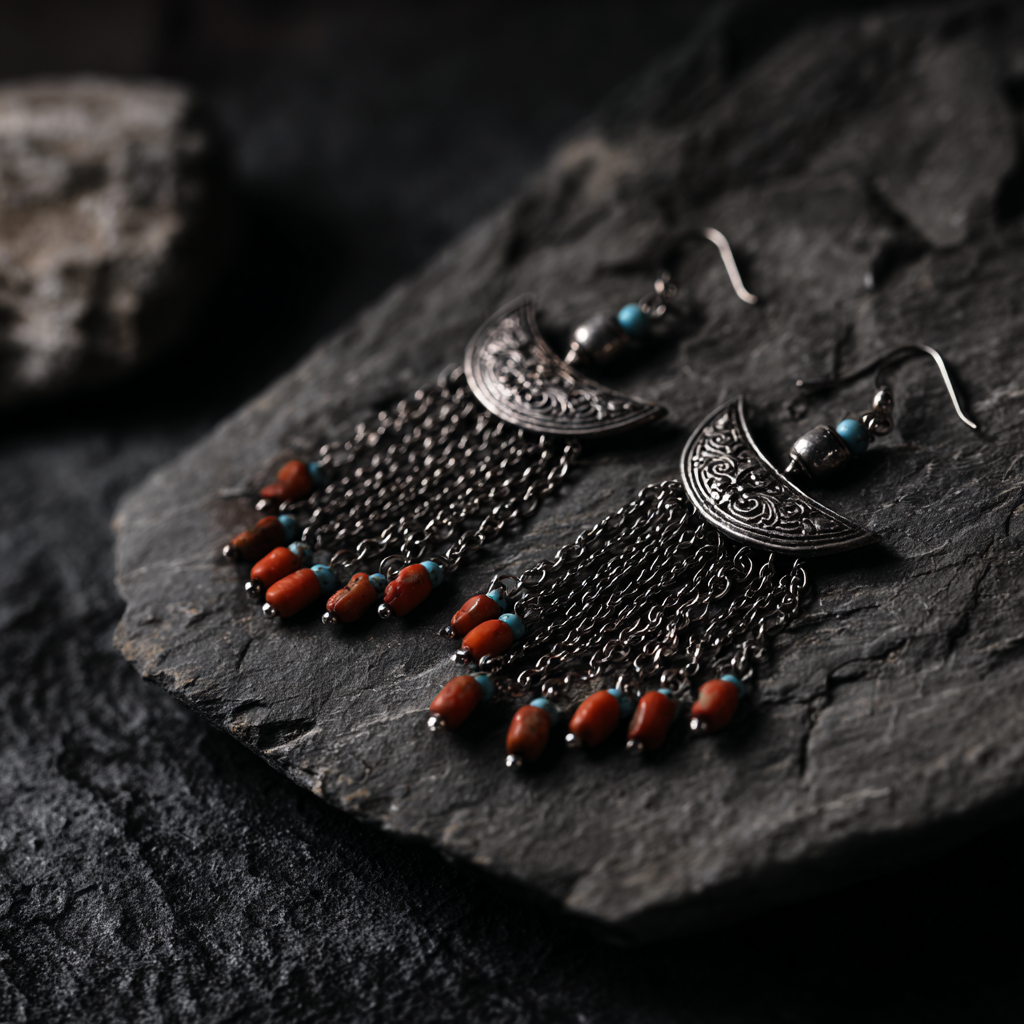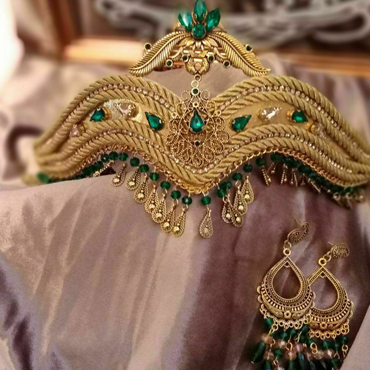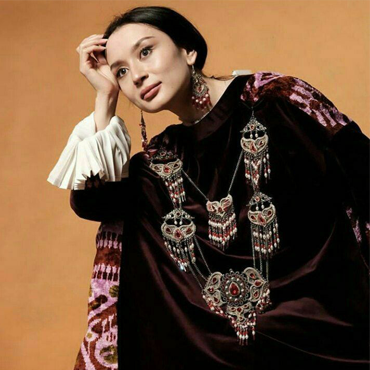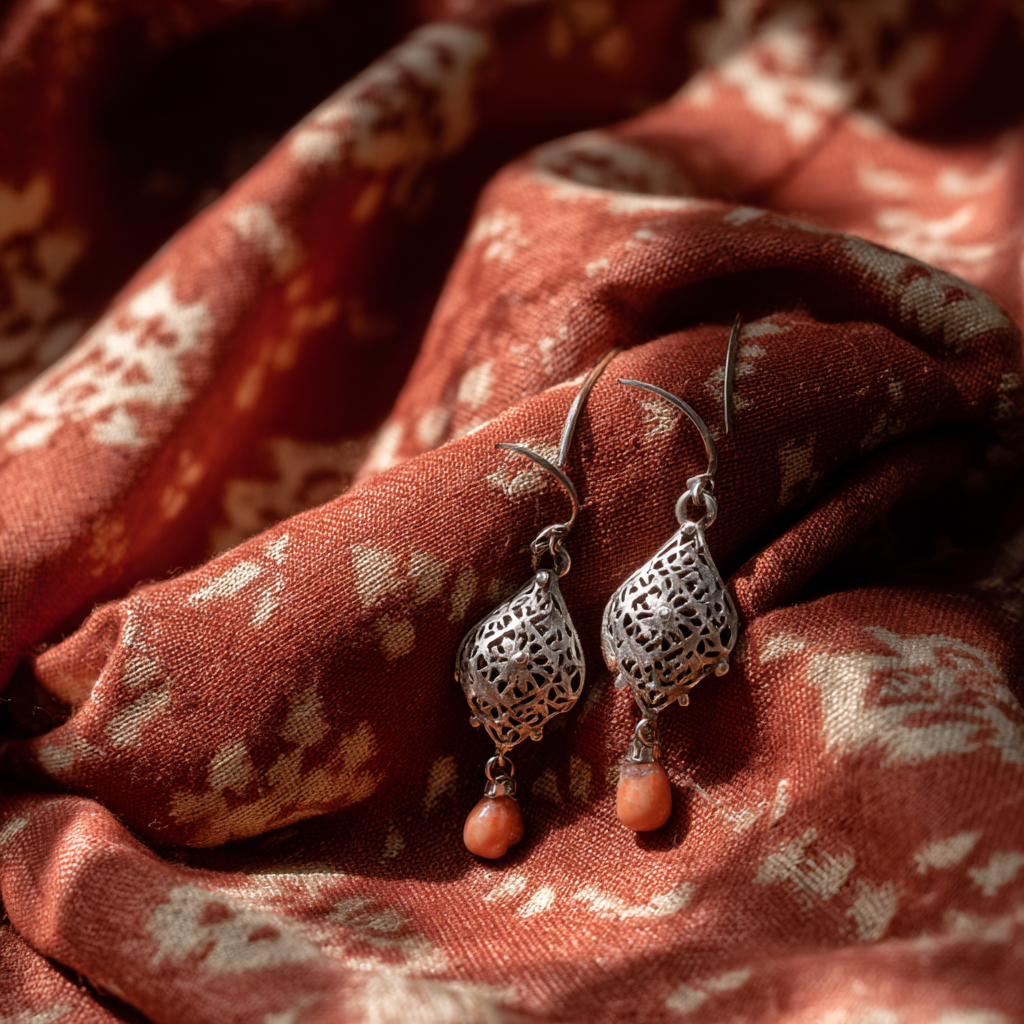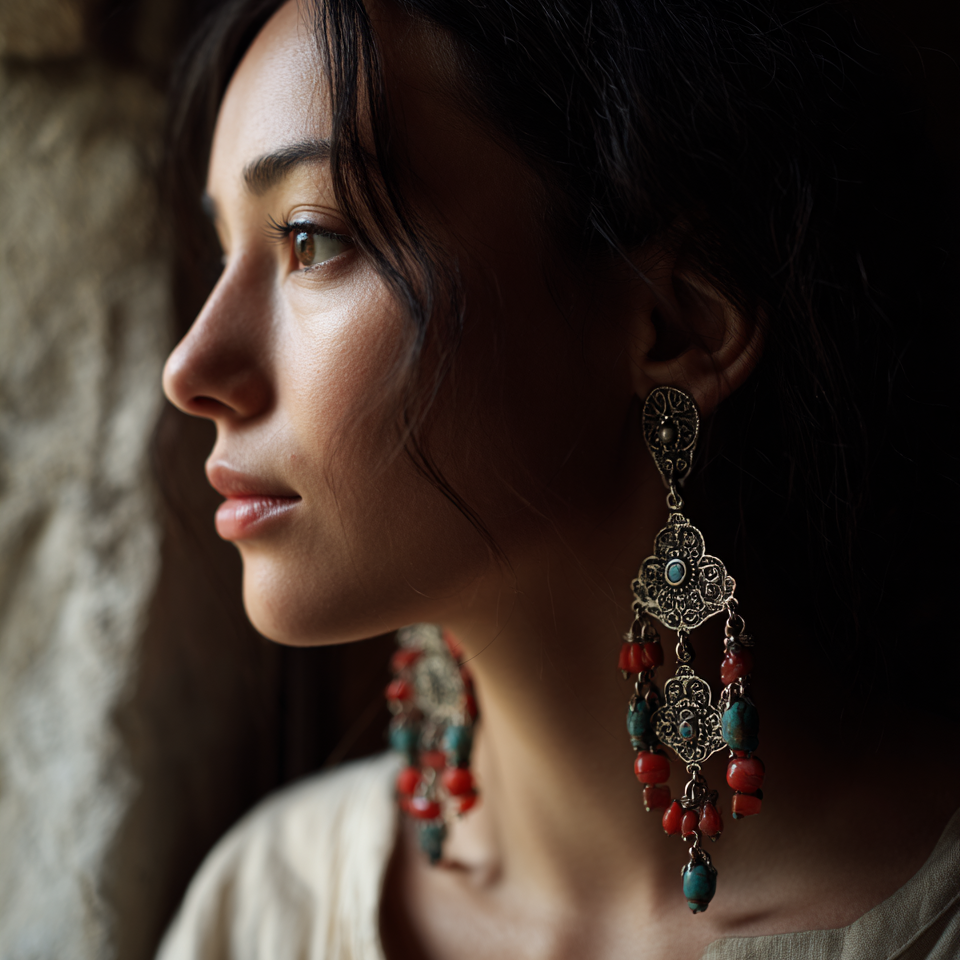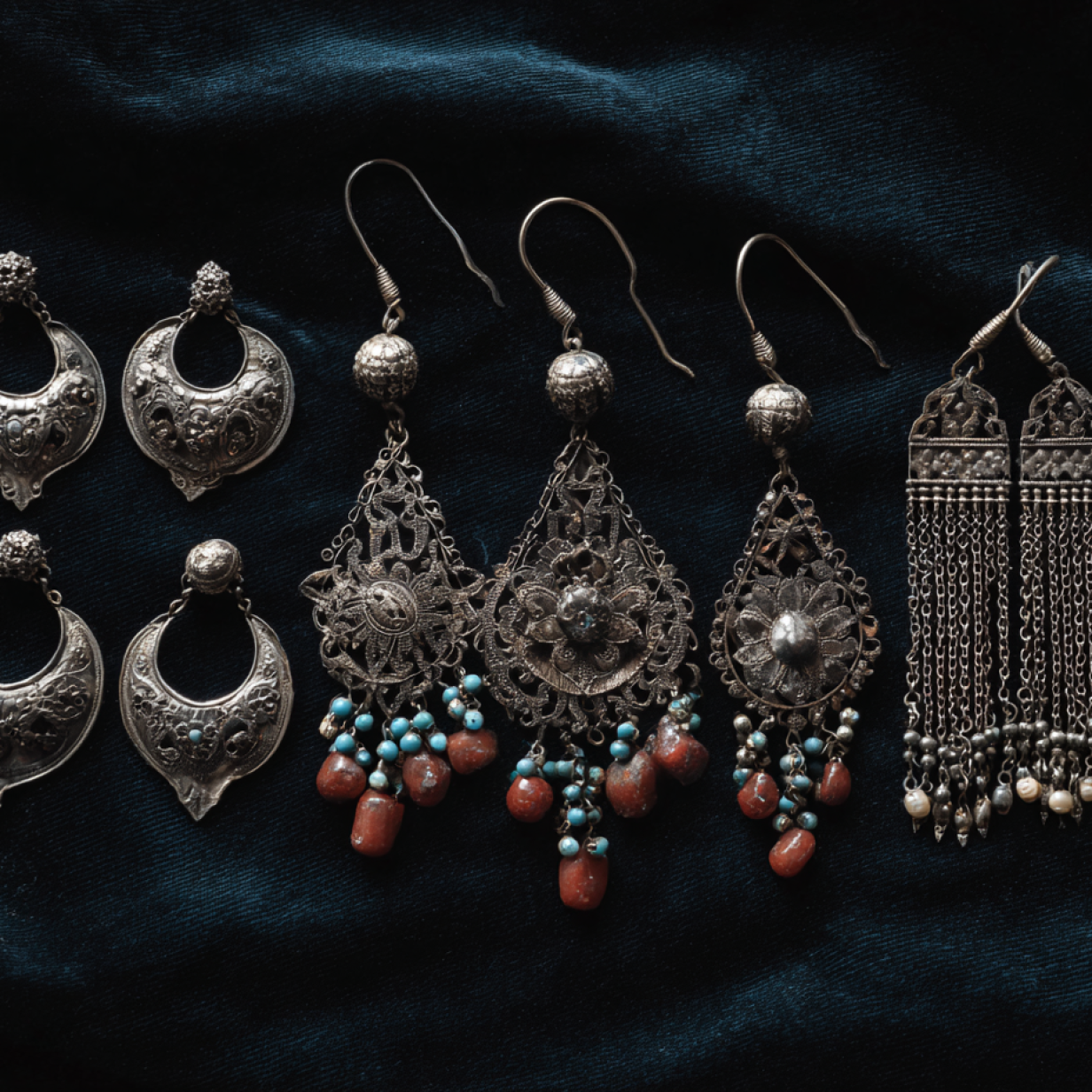Traditional Uzbek jewelry reflects a rich tapestry of cultural heritage, craftsmanship, and artistic expression that spans centuries. Rooted in the heart of Central Asia, Uzbekistan’s jewelry tradition is a testament to the region’s historical significance as a crossroads of diverse cultures and civilizations along the Silk Road.
One of the most distinctive features of traditional Uzbek jewelry is its intricate and detailed designs, often characterized by a harmonious blend of geometric patterns, floral motifs, and symbolic elements. Silver and gold along with semi-precious stones such as carnelian, turquoise, and cornelian, are the primary materials used, creating pieces that are not only visually stunning but also carry profound cultural significance.
The traditional craftsmanship of Uzbek jewelry is deeply intertwined with the nomadic and settled lifestyles of the region’s diverse communities. The nomadic tribes, such as the Karakalpaks, Kazakhs, and Turkmen, created jewelry that was not only a form of personal adornment but also served as a portable form of wealth, easily transported during migrations across the vast Central Asian steppes.
One of the iconic pieces of Uzbek jewelry is the “tumar,” a headdress ornament worn by brides during wedding ceremonies. The tumar is a testament to the Uzbek people’s reverence for the institution of marriage and their commitment to preserving cultural identity. Intricately crafted, the tumar often features delicate filigree work, granulation, and the incorporation of vibrant gemstones. Each element of the tumar holds symbolic significance, reflecting the wearer’s status, beliefs, and familial connections.
The traditional Uzbek jewelry-making process involves a meticulous blend of techniques passed down through generations. Filigree, a technique where fine threads of metal are delicately twisted and soldered together, is commonly employed to create lacy, openwork designs. Granulation, the fusing of tiny metal beads onto a surface, adds texture and complexity to the pieces. Cloisonné enameling, another technique, involves the placement of colorful enamel within compartments formed by thin metal wires.
The artistic inspiration for Uzbek jewelry draws heavily from nature, with floral motifs being particularly prevalent. The delicate representation of flowers, leaves, and vines symbolizes the connection between the wearer and the natural world, as well as the cyclical nature of life and growth. This organic influence is also seen in the depiction of animals, such as birds and mythical creatures, adding an element of mysticism and folklore to the jewelry.
Each region of Uzbekistan has its own unique style and characteristics in jewelry design. For example, the jewelry of Bukhara is known for its bold and vibrant use of gemstones, while Samarkand’s pieces often showcase intricate enamel work. Khorezm, in the northwest, is recognized for its distinctive silverwork, featuring geometric patterns and stylized animals.
Beyond personal adornment, Uzbek jewelry has also been an essential part of ceremonial and cultural practices. Dowry sets, comprising necklaces, bracelets, and earrings, are meticulously prepared by families to be presented to the bride during the wedding ceremony. These sets not only symbolize the family’s wealth but also serve as a form of financial security for the bride.
Uzbek jewelry also plays a role in religious and spiritual contexts. Amulets and talismans are crafted with the belief that they possess protective qualities and can ward off evil. These pieces often feature inscriptions from the Quran or other sacred texts, reinforcing the connection between the wearer and their faith.
In recent times, efforts have been made to preserve and promote traditional Uzbek jewelry-making skills. Artisan workshops and cultural organizations have emerged, providing training and support to new generations of craftsmen. These initiatives aim not only to sustain the artistry of traditional jewelry making but also to empower local communities economically.
The appreciation for Uzbek jewelry extends beyond the borders of Uzbekistan, finding admirers worldwide who recognize the cultural and artistic significance embedded in each piece. Museums and collectors often showcase these treasures, allowing a global audience to marvel at the craftsmanship and historical narratives woven into the fabric of each necklace, bracelet, or headdress ornament.
In conclusion, traditional Uzbek jewelry stands as a testament to the enduring legacy of Central Asian craftsmanship and cultural richness. Beyond its aesthetic appeal, each piece narrates a story of heritage, spirituality, and the interwoven threads of a region that has been a meeting point for civilizations throughout history. As these traditional practices continue to thrive and adapt, Uzbek jewelry remains a vibrant expression of identity, bridging the past with the present and ensuring its legacy for generations to come.

